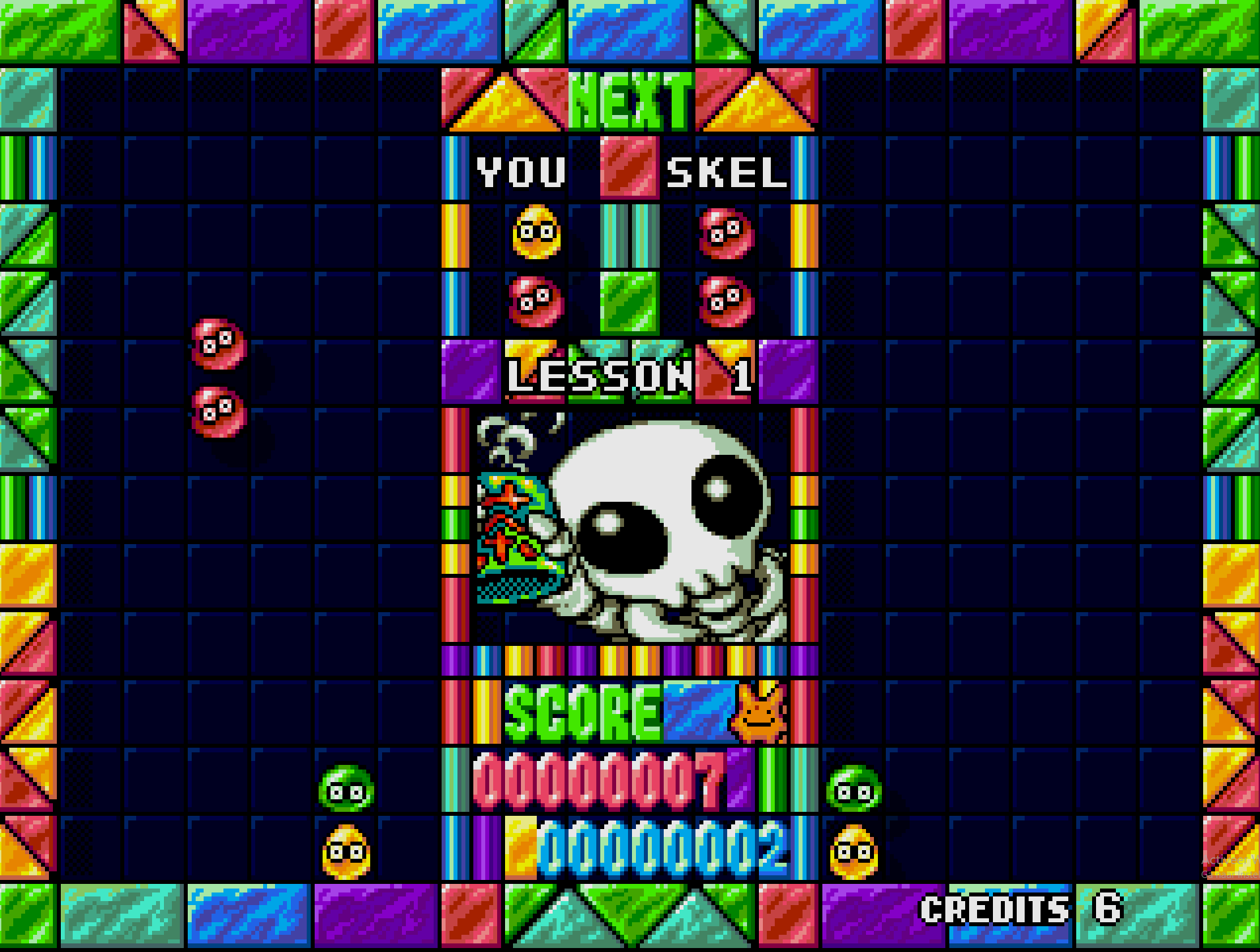Introduction
Released in 1992, Puyo Puyo is a fast-paced color-matching puzzle arcade game that became a phenomenon in Japan and beyond. With cute blob-like characters, competitive two-player battles, and combo-driven strategy, Puyo Puyo carved out its own identity among a crowded field of puzzle games. Its influence spawned decades of sequels, spin-offs, and crossover appearances.

Development and History
- Developer: Compile
- Publisher: Sega (arcade version)
- Release Date: 1992 (arcade)
- Hardware: Sega System C2
Puyo Puyo was originally created by Compile as a spin-off of their earlier RPG series Madou Monogatari, reusing its characters and visual style. The game’s falling blob mechanics offered a new twist on the puzzle formula popularized by Tetris.
Sega published the arcade version using the Sega System C2 hardware, which was based on the Sega Mega Drive/Genesis architecture. Its success in Japanese arcades led to multiple ports, sequels, and localizations.

Gameplay Video
Gameplay and Mechanics
The game revolves around matching groups of similarly colored blobs called "puyos."
Gameplay features:
- Puyos fall in pairs into a vertical playfield
- Matching four or more puyos of the same color makes them pop
- Chain reactions (combos) occur when popped puyos cause others to align
- Versus gameplay: sending “garbage” puyos to the opponent’s field when combos are made
- Game ends when a player’s screen overflows with puyos
Strategic depth:
- Building large chains is key to overwhelming opponents
- Advanced techniques include stairs chains, sandwich chains, and offsets

Cultural Impact and Legacy
Puyo Puyo quickly became one of the most beloved puzzle franchises in Japan:
- Popularized competitive puzzle gaming in arcades and on home consoles
- Led to a long-running franchise with dozens of sequels and spin-offs
- Characters like Arle Nadja and Carbuncle became mascots for Compile and Sega
- The game’s mechanics were licensed and adapted for Dr. Robotnik’s Mean Bean Machine (Sega) and Kirby’s Avalanche (Nintendo)
- Widely featured in esports tournaments in Japan

Fun Facts
- The game is a spiritual successor to Compile’s RPG Madou Monogatari, borrowing its setting and characters
- Sega’s arcade version introduced faster drop speeds and competitive features not seen in early home ports
- The arcade version allowed for linked cabinets in some locations
- Puyo Puyo was one of the first games to reward high-level combos over simple matches
- It became one of Sega’s most successful third-party arcade releases of the 1990s

Conclusion
Puyo Puyo brought depth, charm, and fierce competition to the puzzle arcade scene. Its unique mechanics and character-rich presentation laid the groundwork for a franchise that continues to thrive over 30 years later.

